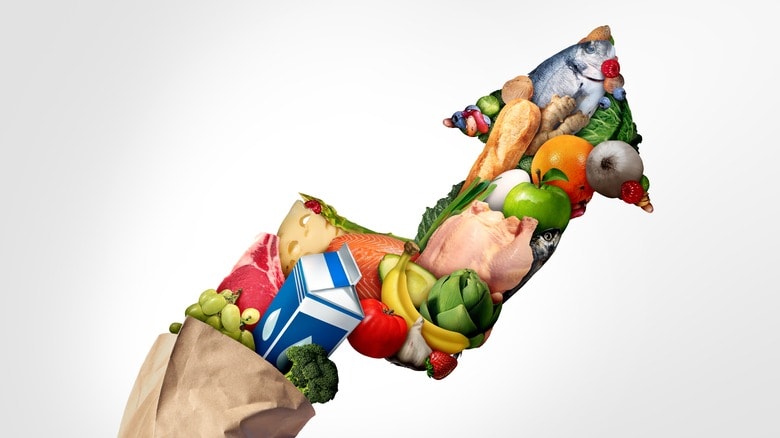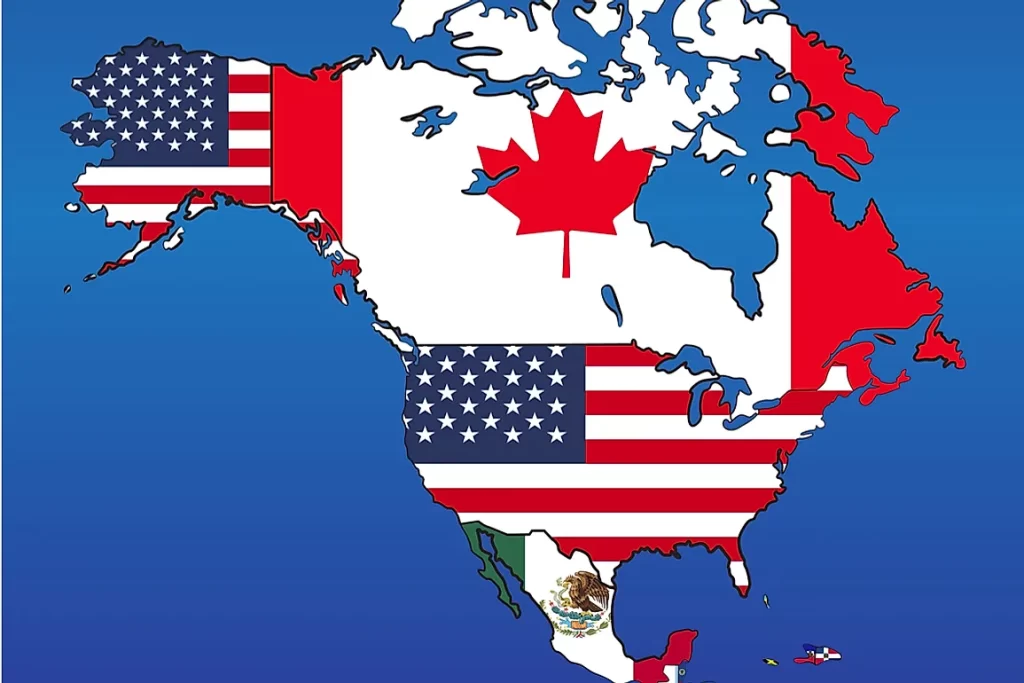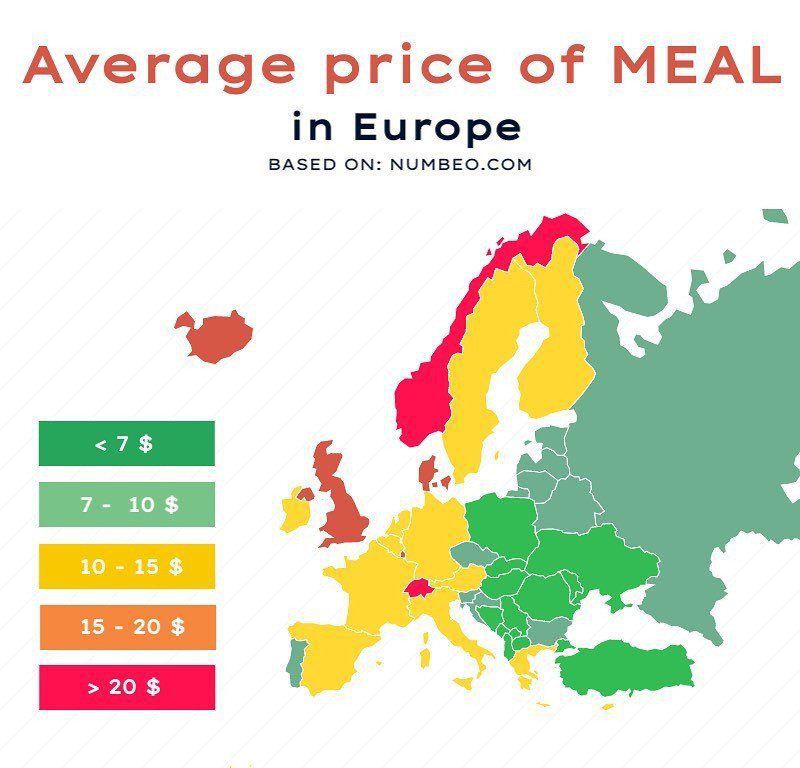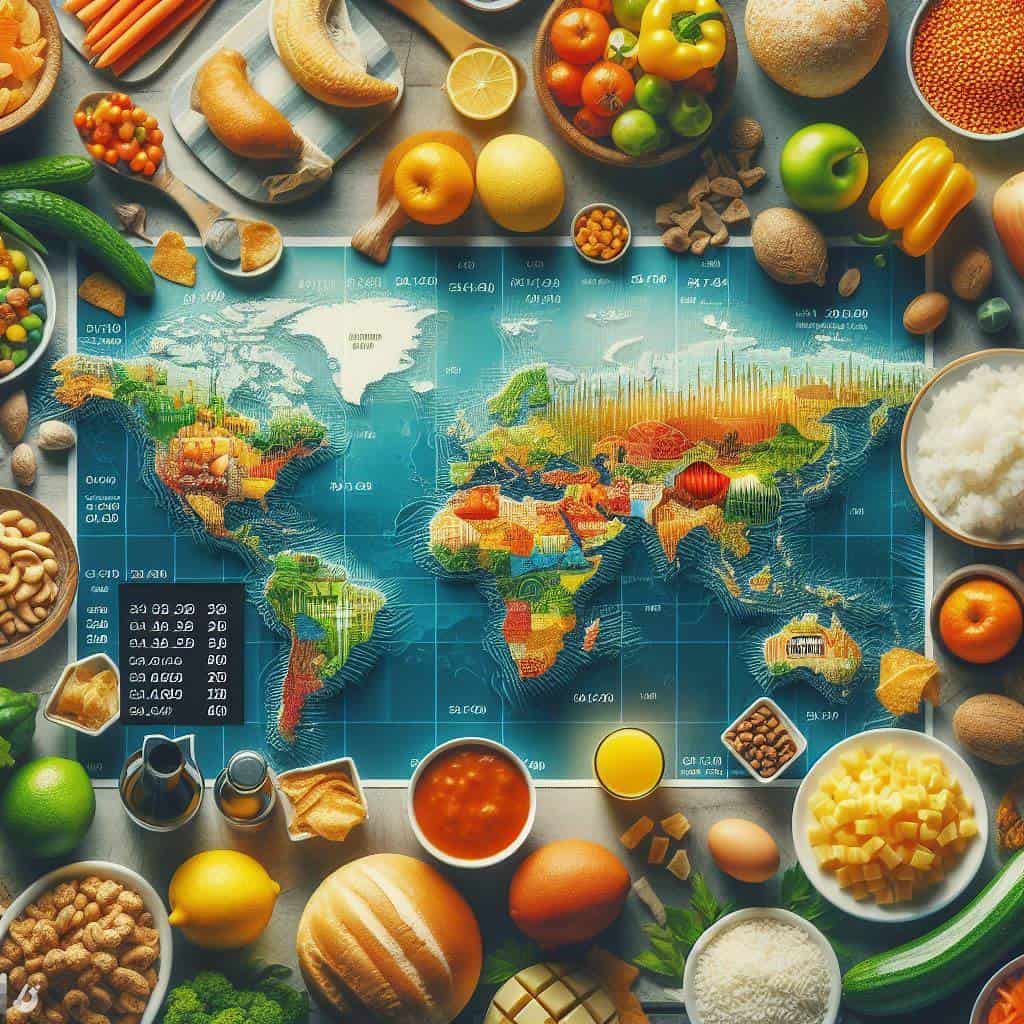In an interconnected world where trade and globalization increasingly shape economies, understanding the price dynamics of food products becomes essential. The price of food products is an essential issue with wide implications for every continent, including dairy and protein products such as meat and poultry, grains, fruits and vegetables. In this article, prepared by the Vira team, we examine and compare food prices across continents, shed light on market dynamics, and provide insights into specific countries in each region. In addition, we will pay special attention to Iran, Turkey, Saudi Arabia, and Iraq in the Middle East in this article.

Food prices in North America:
The North American region includes the United States and Canada, both of which have diverse agricultural landscapes. Food prices in North America are influenced by factors such as weather conditions, agricultural practices, and economic policies. Dairy consumption is high in America and the price of milk and cheese plays a significant role. In Canada, wheat and oats are the main grains that affect their pricing dynamics.

- United States:
Prices in the United States can vary, but in general, the prices of food products, including dairy, meat, grains, fruits, and vegetables, are affected by factors such as production, demand, and trade policies. According to 2021 data from the Bureau of Labor Statistics, the most recent data available, the average cost of food in households is $5,259 annually, or about $438 per month for the United States. On average, a restaurant meal costs about $15 to $25 for one person without a drink or tip. Higher end restaurants cost $30 to $50 or more per person. Fast food restaurants usually offer meals for $5 to $10 per person. - Canada:
As in the United States, food prices in Canada are influenced by factors such as production, distribution, and international trade. Last year’s report estimated that a typical Canadian family of four would spend about $16,300 on food products in 2023. By the same estimate, this year they spent $15,600, either by reducing the quantity or quality of food they buy or by substituting cheaper food products.
Although the report projects total food price increases of 2.5 to 4.5 percent and estimates that a family of four will spend $16,297 on food in 2024 (an increase of $701.79), things are looking up.
Currently, inflation is running as a macro component in the language of the country and the economy may face possible challenges of recession in 2024. - Mexico:
Economic conditions, agricultural production and trade agreements play a role in determining food prices in Mexico. Considering the incredibly varied and interesting food you can eat here, it’s interesting to note that a meal at a cheap restaurant costs $8.17 per person, but you can find street food like quesadillas and tacos for much less – From 1 to 3 dollars!
You can eat cheaply in Mexico and buy fresh produce at cheaper prices than in the US. You can buy two pounds of chicken breast for less than $7, two pounds of beef for around $8 to $10, and two pounds of potatoes for less than 80 cents.
Prices of food products in Europe:
Europe, a continent known for its culinary diversity and diversity in quality food, is made up of several countries with distinct food pricing structures. Germany, France, and Italy are important players in this field and are known for their diverse cuisine. Food prices in Europe fluctuate due to factors such as import/export policies, weather conditions, and changes in consumer preferences.

- Germany:
As a large European economy, German food prices are influenced by factors such as domestic agricultural policies, international trade, and consumer demand, but to get a rough idea of expected monthly costs, a 1-person household probably spends 200-300 euros per month on groceries. It’s also interesting to note that you won’t find much price fluctuation between different regions, but you will see significant price differences between supermarket chains. - France:
French food prices can be affected by agricultural policies in the European Union as well as global market conditions. In France, as in many European capital cities, it costs money to eat well. On average, the French put aside about 300 euros a month for food. This figure can be different depending on the city you live in and the amount of consumption. In general, the cost of food in Paris is higher than in other parts of France. - Italy:
Famous for its rich culinary traditions and gastronomic culture, Italy has an important place in the food price debate in Europe. The country’s cuisine is deeply rooted in fresh, high-quality ingredients, and this is reflected in its food price structure. On the other hand, groceries in Italy are relatively affordable, costing around €200 (INR 16,699) per month at local markets. - Great Britain:
Britain’s exit from the European Union and its impact on trade, as well as domestic agricultural policies, could affect food prices. The average cost of food per person is around £45 per week (£194 per month) including groceries and eating out across all ages and genders. Average weekly food sales in shops for 1 person in the UK is £34, plus another £10 is spent every week on eating out or ordering takeaways.
Food prices in Asia:
Asia, with its sheer size and diversity, offers a wide food product price scenario. China, India, and Japan have a significant share in this dynamic. For example, China’s growing demand for beef and pork in the global meat market has affected prices. Conversely, India’s abundant fruit and vegetable consumption has a significant impact on domestic pricing.

- China:
China’s food prices can be affected by various factors, including domestic production, government policies, and global trade dynamics. The cost of food in China is between 100 and 150 dollars per month. Food in China can be very cheap, but it also depends on what you buy. - Japan:
As a major economic player, Japanese food product prices can be affected by factors such as international trade agreements, production levels, and consumption patterns. In 2022, Japanese households, both working and non-working households, spent an average of approximately ¥63.6 thousand per month on food. - India:
Food prices in India are often influenced by farming practices, monsoon patterns, and government policies.
| Restaurants | Price |
|---|---|
| Food, cheap restaurant | ₹250.00 |
| Food for 2 people, mid-range restaurant, three meals | ₹1,200.00 |
| McMeal at McDonald’s (equivalent to combo meal) | ₹350.00 |
| Homemade beer (1 pint of beer) | ₹160.00 |
- Generally, if you eat at local restaurants, you will get breakfast (omlette/parathas/idli/dosa) and a cup of tea or coffee per person for roughly 60-80 rupees (1 USD/EUR). Lunch and dinner will cost you at least 80-150 rupees ($1-2/euro) per person/per meal.
Food prices in South America:
With its rich agricultural heritage, South America experiences unique price dynamics across countries. Argentina, Brazil, and Colombia are significant players in the food markets of this continent. Meat and poultry prices in Argentina are much lower thanks to a strong meat industry. Brazil significantly affects world prices by producing coffee and soybeans on a large scale.

- Brazil:
Food prices in Brazil are influenced by agricultural practices, export markets, and domestic economic conditions. The cost of food and drinks in Brazil can also vary depending on your taste. An affordable meal at a local restaurant can cost you around $5-$10 per person, while an average meal can run anywhere from $10-$30 per person. Especially if you earn in dollars, euros, pounds, or any other strong currency, we can say that Brazil is one of the easiest places to find quality and healthy food at a cheap price. - Argentina:
Economic factors, including inflation and trade policies, can affect the price of food products in Argentina. A dinner for 4 will be around 1,200 pesos depending on your order. If you are going to a restaurant for a traditional dinner that includes meat, perhaps a barbecue (asado or parrilla), of course, it will be more expensive. It also depends on the drinks you order. Sodas are usually in glass bottles and cost about 50 pesos each. Food prices are affordable for travelers. One of the reasons is that the government subsidizes many services in the country, including energy, transportation, and manufacturing. Therefore, compared to other Latin American countries, Argentina is a cheap country to live in. - Columbia:
As an emerging market, Colombian food product prices can be affected by factors such as production, distribution, and international trade.
Food prices in Africa:
Africa, with its diverse climates and economic structures, highlights distinctive food pricing patterns. Nigeria, South Africa, and Kenya are important countries that should be considered in the food dynamics of this continent. In Nigeria, maize, rice, and cassava play an important role in the overall food pricing structure. South African agricultural production also significantly affects regional grain prices.

- South Africa:
Economic conditions, agricultural policies, and global market trends can affect food prices in South Africa. The general cost of groceries in South Africa varies significantly across different income groups. The BFAP suggests that a “moderate cost healthy food basket” of staple foods, proteins, fruits, and vegetables costs about 3,618 rupees a month. - Kenya:
Like other African countries, food prices in Kenya can be affected by agricultural practices, weather conditions, and economic stability. The cost of buying food reaches 6,000 to 12,000 kroner per month. 28.6% of people in Kenya spend between Sh100 and Sh199 while 12% of people spend between Sh400 and Sh499 per day on food. Those who earn 10,000 and less per month make up the majority of people who spend between 200 and 399 kroner per day on food. - Nigeria:
Food prices in Nigeria are influenced by factors such as agricultural practices, weather conditions, and economic stability. As of February 2023, the average price in Nigeria for one kilogram of bone-in beef has increased to 1,823 Nigerian Naira (NGN), which was equivalent to US$2.35. A slice of sliced bread costs NGN 515 (US$0.66), while frozen chicken costs NGN 2,777 (US$3.59).
Food prices in the Middle East with a focus on Iran, Turkey, Saudi Arabia and Iraq:
The Middle East is a sensitive region known for its rich history and vibrant culinary traditions, and it also experiences unique challenges in food pricing. Iran, Türkiye, Saudi Arabia, and Iraq are important examples to explore.
According to the World Bank, food prices in the Middle East and North Africa region will increase by 8.1 percent in 2023, the highest rate among all regions. This is mainly due to the increase in global commodity prices, supply chain disruptions, currency depreciation, and related factors. Among the four countries we mentioned, Iran has the highest annual inflation rate in 2023 with 39.9 percent, followed by Iraq (16.5 percent), Turkey (14.6 percent), and Saudi Arabia (5.4 percent).
These rates reflect changes in the general level of prices, including food and other goods and services. The Food and Agriculture Organization (FAO) publishes a monthly food price index that measures changes in the international prices of a basket of food commodities. The average of this index reached 127.4 units in December 2023, which has increased by 9.9% compared to the same month in 2022. This index has reached its highest level since July 2011.

FAO also provides country-specific data on domestic prices of various food items such as wheat, rice, maize, sugar, milk, eggs, etc. The following table shows the average price of some selected food items in Iran and Turkey. Saudi Arabia and Iraq in December 2023 USD per kg:
| Country | wheat | Rice | Sugar | Milk | Egg |
|---|---|---|---|---|---|
| Iran | 0.48 | 1.38 | 0.66 | 0.66 | 1.32 |
| Türkiye | 0.36 | 1.08 | 0.72 | 0.60 | 1.44 |
| Saudi Arabia | 0.40 | 1.20 | 0.64 | 1.12 | 1.76 |
| Iraq | 0.32 | 1.28 | 0.80 | 0.80 | 1.60 |
- Iran:
Despite being one of the key agricultural producers in the region, it faces many challenges due to economic sanctions that affect trade and currency devaluation. Such factors contribute to food product price fluctuations and affect the cost of meat, dairy and vegetables. Such factors contribute to food product price fluctuations and affect the cost of meat, dairy and vegetables. The cost of food for breakfast, lunch and dinner for a household of 3 people per month, excluding things such as spices and other essentials for food preparation, such as energy costs, etc., will be an amount equal to 6 million sixty six thousand Tomans. To learn about the largest food chain stores in Iran, read its article on the Vira website. - Türkiye:
With its geographic location bridging Europe and Asia, it benefits from diverse agricultural practices. However, geopolitical tensions and currency fluctuations can affect the price of food items, especially protein items such as meat and chicken. Economic conditions, trade policies and domestic agricultural practices can affect food prices in Turkey. Food in Türkiye is usually fresh and reasonably priced. You can buy them at chain supermarkets or local markets. The food budget for a family of 2 adults is 2,800 lira (145 euros) per month. - Iraq:
strong, wpml_linebreak A country recovering from years of conflict, Iraq is experiencing unique challenges in food pricing. Political instability, limited infrastructure, and reliance on imports affect prices and make them subject to fluctuations. Economic stability, security conditions, and government policies can affect food prices in Iraq. The estimated cost of a family of four in Iraq is $1,775.9 (IQD 2,327,931.5) per month without rent. - Saudi Arabia:
A desert country that is heavily dependent on imports, it faces internal and global factors that shape the price of food products. Government subsidies play an important role in stabilizing food costs and ensuring people’s access. Saudi Arabia’s economy, as a major oil-producing country, and subsequently the price of food products, can be affected by global oil prices, government policies, and trade agreements.
| Cost of Living in Saudi Arabia (Food) | ||
|---|---|---|
| The main lunchtime menu (including drinks) in the business area | 40 rials | (€9) |
| Mixed meal at a fast food restaurant (Big McMeal or similar) | 23 rials | (€5.45) |
| 500g (1lb) boneless chicken breast | 14 rials | (€3.40) |
| 1 liter (1 liter) full fat milk | 4.80 rials | (€1.13) |
- The cost of an average meal in Saudi Arabia varies by location and type of restaurant, but can typically range from SAR 25 to SAR 50 ($6.67 to $13.33). Eating at a fast food restaurant or a street food vendor can cost less while eating at an upscale restaurant or hotel can cost more.
Conclusion:
Prices of food products, including dairy and protein products, grains, fruits, and vegetables, vary significantly across continents. Factors such as weather conditions, agricultural practices, trade policies, and economic situations strongly influence this dynamic of prices.

By examining different continents and key countries such as those in the Middle East, we gain valuable insights into the multifaceted nature of food product pricing. Understanding these dynamics is essential for policymakers, consumers, and industry players to effectively navigate the global food trade. Also, if you are interested in food product price methods, you can read the article on dynamic pricing of food products in stores.

